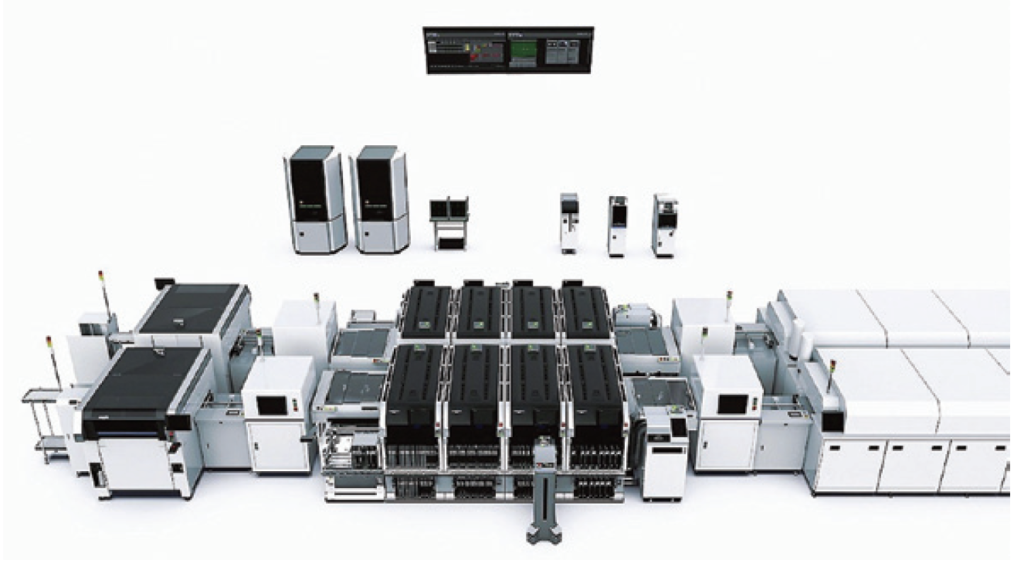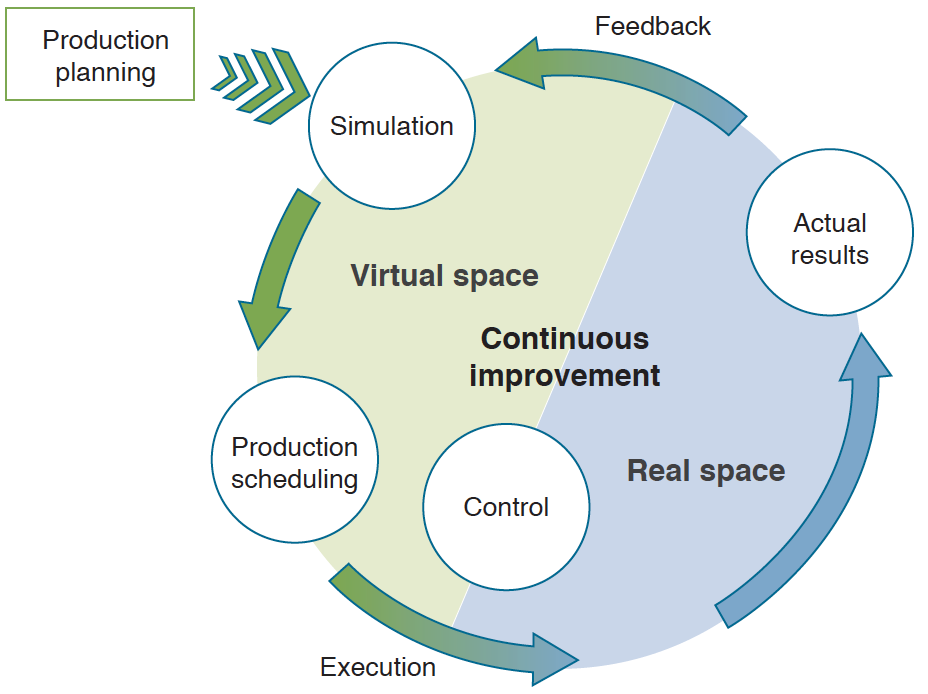ASIA ELECTRONICS INDUSTRYYOUR WINDOW TO SMART MANUFACTURING
FUJI Taps Digital Twin for Simulation in Smart Factories
FUJI Corporation proposes simulations using the Digital Twin technology for promoting smarter factories.
In the manufacturing industry, demand is increasing for automation and labor saving due to soaring labor costs and shortage of workers. In particular, due to the spread of the COVID-19 infections, there is increasing interest in labor saving, fully automated, and unmanned production with less human risk. The same is true for mounting factories, in which smarter factories are becoming more widespread.
The company promotes in the global market the FUJI Smart Factory based on the integrated production system Nexim that utilizes internet of things (IoT)/machine-to-machine (M2M) and realizes flexible and efficient production, including automatic setup change. The company has released the next-generation mounting machine NXTR and cream solder printing machine NXTR PM, which are considered as a new platform for this system and key machines enabling full automation of the surface mounting line.

In Digital Twin, information is transferred from physical real space to virtual space in real time using IoT reproducing the environment of the real space in the virtual space. Using the environment of the Digital Twin, both monitoring of the real space and simulations become possible.
Integrated Production System
Many of the challenges in promoting automation at production sites are in identifying processes to be automated and in selecting automation equipment. Prior confirmation is important in avoiding the risk of diminishing the effects of introducing automation equipment. The effective method is the utilization of the Digital Twin simulation technology.
Nexim uses simulation technology to create existing SMT floor in a virtual space. It visualizes issues on the SMT floor by considering the human workload, for which the quantification is difficult in the real world. It can also visualize effects of introducing automated equipment or changing operations.

On the SMT floor modeled in the virtual space, parameters can be set for each process such as the number of automated guided vehicles (AGVs) and automated parts warehouses, number of workers, and work flow lines, making effects of various changes very clear.
The accuracy of the data used is important for the realization of precise simulations. Nexim can calculate precise cycle time for each production type and operation method and provide detailed actual values, which is effective in improving the accuracy of simulation.
The system is primarily intended for full automation. It strengthens the scheduling function that automates troublesome scheduling before starting production and inventory management, preparation, and tray service of various components.
According to daily production plan, the production site creates a production schedule in consideration of line allocation, production order, shift of workers, and so on. With the progress of automation, however, the number of automated devices on the floor will increase, making scheduling more complicated. For this reason, the scheduler models the existing lines and automation equipment and the skills and work shifts of workers, and assigns them to lines and even creates setups by taking into account the production order.
In addition, Nexim accurately calculates the production time when the takt time differs depending on varieties to be produced. By linking Nexim and the scheduler, scheduling is performed from parts delivery to external setup and transportation timing.
Automation of parts preparation is effective for digitizing the performance of a production site (the real space). The analysis of the difference between the performance and the planning can identify the cause and improve the accuracy of the feedback to the simulation (the virtual space).




